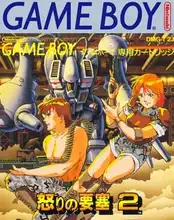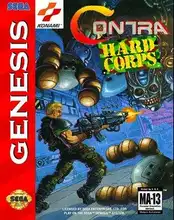The Magic of Retro Cooperative Multiplayer
There's a certain kind of magic that happens when two or more players team up to take on a game's challenges together. Before high-speed internet and online lobbies were the norm, this magic was almost exclusively found right there in your living room, huddled around a CRT screen. This was the golden age of Cooperative Multiplayer in retro gaming, a time defined by shared snacks, tangled controller cords, and victorious high-fives (or sometimes, friendly fire arguments).
It wasn't just about playing a game; it was a social event. Friends came over, siblings stopped squabbling (briefly), and you tackled digital worlds side-by-side. What was it about these old-school co-op experiences that sticks with us so much?
Why Retro Co-Op Hit Different
Unlike today's often anonymous online interactions, retro cooperative multiplayer was inherently personal.
- Shared Physical Space: You were there, together. You could see your teammate's reactions, strategize on the fly with verbal cues, and feel the collective tension or triumph.
- Single Screen Focus: Many classic co-op games used a single screen. This forced coordination. Go too far ahead in Contra, and your buddy gets scrolled off! It taught teamwork, sometimes the hard way.
- Simpler Objectives: Often, the goal was clear: get to the end of the level, beat the boss, survive the wave. This straightforward design made it easy to jump in and contribute.
- Limited Lives/Resources: Sharing a pool of lives or limited health packs raised the stakes and emphasized mutual support. Your survival depended on your partner, and vice-versa.
The Hardware Hustle: How We Connected
Achieving multiplayer back then often required more than just plugging in a second controller.
- Extra Controllers: Of course, the basics. Having that second (or third, or fourth) gamepad was essential.
- Multitaps: Ah, the multitap! Devices like the SNES Multitap, Sega Genesis 4 Way Play, or the Nintendo 64's built-in four ports were revolutionary. They allowed for 3, 4, or even 5 players in games designed for it, leading to chaotic, unforgettable sessions in games like Bomberman or Mario Kart 64.
- Link Cables: While more common for competitive play (like Tetris or Pokémon on the Game Boy), link cables also enabled some early handheld co-op experiences.
These setups, while sometimes cumbersome, were part of the ritual. Clearing space, untangling cords, finding enough power outlets – it all added to the anticipation of a shared gaming adventure.
Genre Highlights: Where Co-Op Shone
Certain game genres were practically built for cooperative multiplayer back in the day.
Side-Scrolling Beat 'em Ups
Walk right, punch bad guys. Simple, effective, and incredibly fun with a friend covering your back.
- Double Dragon (though early console ports often lacked true co-op)
- Final Fight (again, console ports varied, but arcade was king)
- Teenage Mutant Ninja Turtles: Turtles in Time (Arcade & SNES versions were fantastic)
- Streets of Rage series
Tag-teaming enemies, performing joint special moves, and sometimes accidentally punching your partner – pure beat 'em up bliss.
Run-and-Gun Action
These games demanded quick reflexes and coordinated movement, making a partner invaluable.
- Contra series (NES, SNES, Genesis - the Konami Code was often necessary!)
- Gunstar Heroes (Sega Genesis)
- Ikari Warriors (Arcade, NES)
Covering different parts of the screen, reviving each other, and unleashing simultaneous firepower felt incredibly heroic.
Sports & Party Games
While many sports games were competitive, some allowed you to team up against the CPU or other players. Party games, of course, were designed from the ground up for multiple players.
- NHL Hockey / Madden NFL (Sega Genesis - early examples of co-op vs. AI)
- Mario Kart 64 (Battle Mode was a co-op/competitive hybrid, Grand Prix allowed teaming)
- Mario Party series (N64)
- Bomberman (Various systems - frantic, explosive fun)
- Crash Bash (PS1 - mini-game chaos)
These were the games that could turn a quiet afternoon into a raucous party.
Unique RPG Experiences
Co-op in RPGs was less common on consoles compared to PC, but some gems offered it.
- Secret of Mana (SNES - allowed players to drop in/out after getting new party members)
- Dungeon Explorer (TurboGrafx-16 - supported up to 5 players!)
Sharing the journey, strategizing boss fights, and exploring vast worlds together added a wonderful dimension to the RPG formula.
Single Screen vs. Split Screen
The debate wasn't really a debate back then; it was mostly a technical limitation or design choice.
- Single Screen: Prevalent in beat 'em ups, platformers (New Super Mario Bros. Wii came later but perfected the zoomed-out camera), and top-down games. Everyone shared the same view, forcing proximity and potential scrolling issues if players didn't keep pace.
- Split Screen: More common in 3D games like FPS or racing games where players needed independent views. GoldenEye 007 on N64 is a legendary example, though screen peeking was a constant hazard!
Each had its charm. Single screen felt more unified, like you were truly side-by-side in the game world. Split screen offered freedom but sacrificed that immediate sense of togetherness.
Reliving the Magic Today
Thankfully, the spirit of retro cooperative multiplayer isn't confined to dusty attics.
- Emulation: Platforms like RetroPie or emulators on PC (like DOSBox for old PC co-op games) let you revisit these classics. Many support using modern controllers, and some even facilitate online play that mimics the old local experience.
- Digital Stores: Services like GOG.com offer DRM-free versions of many classic PC games, some of which feature local or network co-op modes that are easier to set up now than they were in the 90s.
- Modern Ports/Collections: Companies often release collections of retro games with added modern conveniences, sometimes including improved co-op options.
Gathering friends, firing up an emulator or a classic console, and diving into a co-op game from yesteryear is a fantastic way to reconnect with the roots of multiplayer gaming and share that unique, nostalgic experience.
FAQ
Q: What's the difference between co-op and competitive multiplayer? A: Cooperative multiplayer (co-op) is when players work together towards a common goal, usually against the game's AI or environment. Competitive multiplayer is when players compete against each other.
Q: How did more than two players work on older consoles? A: Many consoles originally only had two controller ports. To support more players (typically 3 or 4), you needed a special accessory called a "multitap" that plugged into a controller port and provided additional ports. The Nintendo 64 was notable for having four built-in ports.
Q: Were all retro multiplayer games split-screen? A: No, many retro multiplayer games, especially 2D ones like beat 'em ups or platformers, used a single shared screen for all players. Split-screen was more common in 3D games like racing or first-person shooters where players needed different camera perspectives.
Q: Can I play these old co-op games today? A: Yes! Many retro games are available digitally on modern platforms (like GOG.com for PC classics) or can be played via emulation on computers or dedicated devices like the Raspberry Pi. You'll just need controllers and friends!
The era of retro cooperative multiplayer gave us some of the most cherished gaming memories. It was about shared challenges, physical presence, and the simple joy of tackling a game with a friend by your side. While online gaming dominates today, there's still nothing quite like the feeling of classic couch co-op. So, dust off those old controllers, find a friend, and relive the magic!




